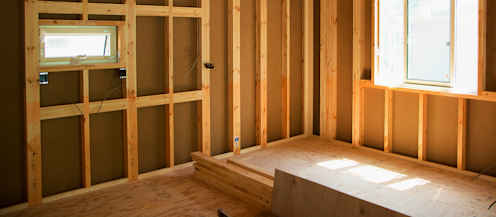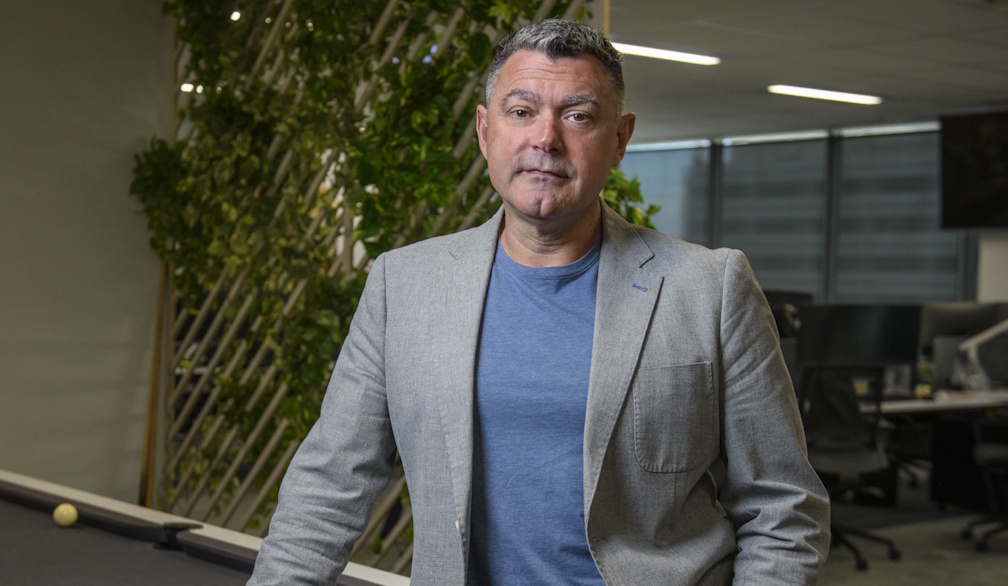The Greens were right to agree to pass Australia's Housing Future Fund bill – the case for further delay was weak
- Written by Brendan Coates, Program Director, Economic Policy, Grattan Institute

The Housing Australia Future Fund, or HAFF, will finally pass the Senate this week, most likely on Thursday[1].
Based on a Grattan Institute proposal[2], the fund is expected to support the construction of 20,000 social homes and 10,000 affordable homes over the next five years.
The Bill has been stalled[3] in the Senate for months, with the Coalition opposing it and the Greens refusing to lend their support to it until the government agreed to support a number of their own proposals for housing.
But the Greens have now agreed, in exchange for another A$1 billion[4] for social housing, on top of the $2 billion[5] in extra social housing funds the federal government gave to the states in June.
The biggest social housing boost in years
The fund will begin with $10 billion[6] borrowed by the government and invested by the Future Fund, with the returns used to offer at least $500 million a year in subsidies to state governments and community housing providers in order to support the construction of social and affordable housing.
It will be the biggest single investment in social housing since the global financial crisis 15 years ago.
Social housing – in which rents are typically capped at 25-to-30% of tenants’ incomes – can make a big difference to the lives of many vulnerable Australians.
Yet Australia’s stock of social housing, currently about 430,000 dwellings, has barely grown in 20 years, despite the population growing 33%.
Social housing is expensive
What makes housing “social housing” is a big rental discount, or subsidy, given to tenants. The subsidy needed is thought to be around $15,000 per rental per year.
Once that subsidy is guaranteed to a provider such as a state government or community housing organisation it can pay the upfront costs of construction knowing that rent and subsidy combined will make the project viable.
Future funds are a way of funding it
Future funds are not unusual.
The main Future Fund was set up in 2006 to accumulate funds to pay for public sector pensions and the Board of Guardians currently manages it and five[7] additional special-purpose funds:
the Medical Research Future Fund,
the DisabilityCare Australia Fund
the Aboriginal and Torres Strait Islander Land and Sea Future Fund
the Future Drought Fund
the Disaster Ready Fund.
The theory, in most years borne out in practice[8], is that such funds can earn more than the government has to pay to borrow, meaning they can be a better use[9] of government funds than paying off debt.
A concession offered to the Greens during negotiations means the housing fund will have to spend a minimum[10] of $500 million a year on social and affordable housing (a figure that was previously a maximum[11]) regardless of the fund’s returns in any particular year.
The case for further delay was weak
Instead of a rent subsidy of $500 million per year drawn from a future fund, the Greens wanted a number of commitments including $5 billion per year[12] invested directly in social and affordable housing.
As strange as it seems, apart from the amounts involved, the two ideas weren’t that far apart.
One idea (the Greens) has the government borrowing to invest in housing, and using the growth in the value of that investment to subsidise rents.
The other idea (the government’s) has the government borrowing to invest in shares and other assets, and using the growth in the value of that investment to subsidise rents.
Under both, the government would guarantee to subsidise rents using the returns on assets it borrowed to buy.
This made the case for further delay weak.
The fund will need more than $10 billion
The government says in its first five years of operation the $10 billion HAFF will help fund the construction of 20,000 social homes and 10,000 affordable homes.
But Grattan Institute calculations suggest it will do it by committing the returns of the fund to rent subsidies for about 15 years.
This means that, as presently set up, the fund is unlikely to support the building of further social housing for a decade or so beyond the first five years.
Read more: The compelling case for a future fund for social housing[13]
Yet other calculations[14] suggest Australia is set to need around 6,500 extra social housing dwellings per year just to keep pace with population growth.
This means the initial $10 billion won’t be enough – the HAFF will have to grow.
The Grattan Institute originally suggested $20 billion[15], which still mightn’t be enough, but it could be enough if state governments agreed to match it.
Then, with a $20 billion fund channelling subsidies of $1 billion a year into housing subsidies, plus matching funding from the states, there’s a chance we could make Australia’s social housing stock grow faster than Australia’s population for the first time in decades.
At $10 billion, the Housing Australia Future Fund is a start.
References
- ^ on Thursday (www.abc.net.au)
- ^ Grattan Institute proposal (theconversation.com)
- ^ stalled (www.realestate.com.au)
- ^ A$1 billion (theconversation.com)
- ^ $2 billion (www.pm.gov.au)
- ^ $10 billion (ministers.treasury.gov.au)
- ^ five (www.futurefund.gov.au)
- ^ borne out in practice (www.finance.gov.au)
- ^ better use (www.jstor.org)
- ^ minimum (www.theguardian.com)
- ^ maximum (ministers.treasury.gov.au)
- ^ $5 billion per year (www.maxchandlermather.com)
- ^ The compelling case for a future fund for social housing (theconversation.com)
- ^ Yet other calculations (grattan.edu.au)
- ^ $20 billion (theconversation.com)
Authors: Brendan Coates, Program Director, Economic Policy, Grattan Institute














